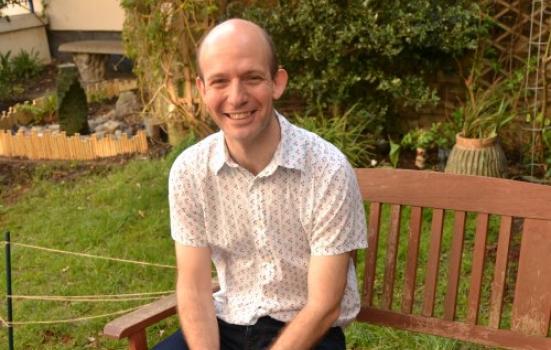Outgoing Polka Theatre Artistic Director Jonathan Lloyd tells us who and what has inspired him throughout his career.

Joan Littlewood
There’s a great quote that compares the Royal Court of the 1960s to a church and Joan Littlewood’s Theatre Royal Stratford East to a pub. Personally, I’ve always liked theatres that were more like a pub - convivial, rowdy and messy. I remember my shock and pleasure on first encountering Theatre Workshop’s ‘Oh! What A Lovely War’, the sharp, blazing edge of its political message, its emotional clout and yet at the same, it was entertaining. Learning more about Joan Littlewood, the way she championed misfit talents like Shelagh Delaney and Brendan Behan, her campaign for a fun palace in London, I realised how stubbornly revolutionary she had been, and how there was a whole alternative tradition of British theatre that I was only beginning to wake up to.
The Bush
I got my first break at the Bush. A theatre like a pub, definitely, and a theatre above a pub. A champion of the new, a risk-taker, a theatre to fight and fall in love with. At the time you could cram 110 people in there, your back against a stranger’s legs; you felt as if you were inside the story you were watching, the actors were so close. I started as an assistant director, working with Kathy Burke, Vicky Featherstone, and Artistic Director of the Bush back then, Dominic Dromgoole, the best artistic director you could ever hope to work for. He led a small, dedicated team, and all that mattered were the plays on stage. The space had a rare quality, it gave everything an urgency and focus; you couldn’t fake anything. I remember my fierce pride at the first show I directed there, David Eldridge’s brilliant ‘Serving It Up’, the thrill and tingle as the actors strutted out for the opening scene.
Leigh Wolmarans
I was Associate Director at Soho Theatre for nine years, directing new plays and running the company’s education and community programme. Those two things have always gone hand in hand for me, each feeding the other. My favourite project was a playwriting scheme for 10 and 11 year olds in local schools. The first year I fumbled through and learnt as I went. But then I saw Leigh Wolmarans in action. He was a teacher at St Peter’s Primary School and had an energy and teeming enthusiasm for drama that swept all along with him. His class were constantly putting on plays, writing film scripts, creating their own sets and costumes. Their plays were fizzing with ideas, imagination, full of heartfelt emotion, sophistication and theatricality. There was no baggage, no sense of ‘what a play ought to be’, they were playing with form and content in a way that’s always stayed with me and taught me never to underestimate a child’s imagination.
Vivian Gussin Paley
I first encountered Vivian Paley’s work at a conference organised by London Bubble. A kindergarten teacher in Chicago, she pioneered and has written extensively about her use of storytelling and story-acting with young children. Her approach is simple and all about listening, tuning into the concerns, preoccupations, hesitancies and hopes of a child’s imagination, as expressed through storytelling. Her work taught me that stories can be so many things. And how, when a story is shared, what begins as a seed in an individual’s mind takes on a new life and is owned by a group, a community of story-actors. This approach was a huge inspiration for a play we developed at Polka last year, called Inside Out. It was shaped and inspired by a group of 4 to 6 year olds from a local children’s centre. Everything in the play, the stories, ideas, settings and characters, sprang directly from the stories told or shown us by the children we had worked with for nearly a year. They took us to places we never expected to go.
Mark Storor
Of all the theatre makers I’ve met in my time at Polka, Mark stands out as someone completely unique. He’s absolutely uncompromising in his art. He often works through a sustained process of gathering ideas and material from participants – for example, young kidney dialysis patients on For The Best, teenagers on The Fat Girl Gets a Haircut. Then he draws out the very essence of each person’s story, finds the best, most startling way to express it theatrically and then adds his own distinctive stamp. His work has taught me that the best participatory projects are all about exchange, a meeting place where all those taking part challenge and inspire each other to create things they never thought possible. As I prepare to start my new job at Pegasus Theatre in Oxford, that’s a thought never far from my mind.
Jonathan Lloyd will begin his new role as Artistic Director and Chief Executive of Pegasus Theatre in September.
www.polkatheatre.com
www.pegasustheatre.org.uk




